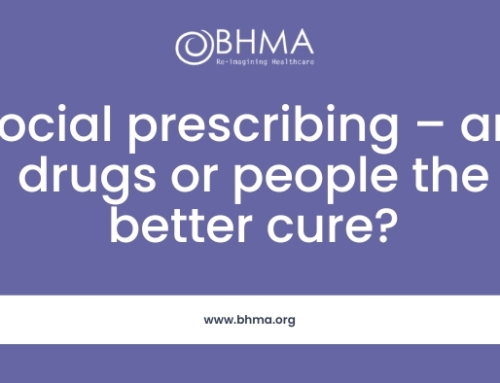BHMA Student Essay – A creative enquiry into what is missing in our clinical education?
Lucy Butterfield – University of Manchester, Third Year Medical Student
 Practising medicine is often considered an ‘art’, but this principle is frequently overlooked during the years of clinical education, where proficiency is assessed by how students perform in comparison to pre-defined, often rigid, marking criteria. I’m not asserting that these should cease entirely; of course, overarching standards are vital to the establishment of safe and competent medical practitioners – NICE guidelines and BMJ Best Practise are prime examples of this. But I do question whether we require such stringent checklists to evaluate subjective capabilities, for instance communication. We live in the era of personalised healthcare and patient partnerships; the one-size fits all approach to medicine clearly doesn’t exist! Certain nuances can only be gained from observing the patient in front of you and employing all your senses to assess a given situation. It is like observing a painting up-close, and then taking a step back to assess it once more or re-reading a page in a book upon finishing a chapter.
Practising medicine is often considered an ‘art’, but this principle is frequently overlooked during the years of clinical education, where proficiency is assessed by how students perform in comparison to pre-defined, often rigid, marking criteria. I’m not asserting that these should cease entirely; of course, overarching standards are vital to the establishment of safe and competent medical practitioners – NICE guidelines and BMJ Best Practise are prime examples of this. But I do question whether we require such stringent checklists to evaluate subjective capabilities, for instance communication. We live in the era of personalised healthcare and patient partnerships; the one-size fits all approach to medicine clearly doesn’t exist! Certain nuances can only be gained from observing the patient in front of you and employing all your senses to assess a given situation. It is like observing a painting up-close, and then taking a step back to assess it once more or re-reading a page in a book upon finishing a chapter.
A much-treasured tale of my childhood was that of ‘The Velveteen Rabbit’, written by Margery Williams, and beautifully illustrated by William Nicholson. It describes a young boy who falls ill with Scarlet Fever and his relationship with his beloved stuffed rabbit. Whilst forming the basis for creative inspiration – as demonstrated through my painting above – it also prompts personal reflection and consideration of the wisdom underpinned by this literary classic. The archetypal medic might consider the impact of scarlet fever as the focal point for clinical relevance within the story. However, if you take a broader perspective, you’ll notice that far more can be learned and applied to practise of medicine such as the importance of resilience, staying true to yourself, and the value of human connection and vulnerability.
A simple change in viewpoint or context can alter your perspective, influence how you approach a given situation, and direct the way you provide patient care. In my opinion, the arts allow us to become more adept at broadening our focus, connecting with patients on a much deeper level, and fostering more empathetic and compassionate interactions. They not only inspire us to be better clinicians, but it also helps us to navigate the unforeseen complexities in life, of which there are many and cannot possibly be understood or addressed by any textbook. The frameworks taught in medical school could certainly benefit from an increased dose of flexibility and creativity.

